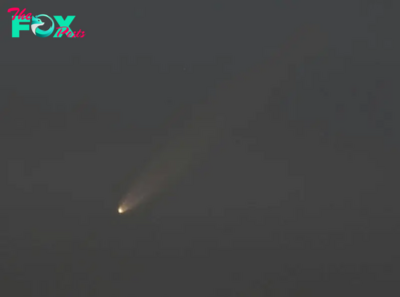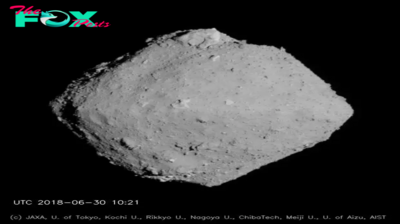Science
Volcano in Tanzania with weirdest, runniest magma on Earth is sinking into the ground
A volcano in Tanzania with magma that erupts like a garden hose has been steadily sinking into the ground for the past 10 years, a new study shows, and the cause could be a deflating reservoir directly beneath one of the volcano's two craters.
The new research reveals that the ground around the summit of Ol Doinyo Lengai volcano, which sits along an active rift zone in East Africa, subsided at a rate of 1.4 inches (3.6 centimeters) per year between 2013 and 2023. This means the 9,718-foot-tall (2,962 meters) volcano shrank by about 1.2 feet (36 cm) in the timeframe of the study, which was published June 8 in the journal Geophysical Research Letters.
Researchers used data from two satellite systems, Sentinel-1 and Cosmo-SkyMed, to produce maps showing changes over time in the ground around Ol Doinyo Lengai. Their maps indicate that a circular patch of ground around the volcano's northern crater was "moving away from the satellite with a steady rate of displacement over time," the researchers wrote in the study.
Ol Doinyo Lengai is the only known volcano on Earth that is actively erupting carbonatite magma — extremely runny magma that is saturated with alkali elements, such as calcium and sodium, and poor in silica. Most terrestrial magmas are rich in silica, a compound made from bonded chains of silicon and oxygen that binds molten rock together and gives it a viscous consistency. But unlike those other magmas, whose weight is between 45 and 70% silica, the magma that feeds Ol Doinyo Lengai contains less than 25% silica by weight, according to Erik Klemetti, a volcanologist and associate professor at Denison University in Ohio.
Related: Antarctica is covered in volcanoes, could they erupt?
"If you had to pick the most unique volcano on Earth, you'd be hard pressed to find a better candidate than Tanzania's Ol Doinyo Lengai," Klemetti wrote in a 2014 Wired article. The lava that comes out of Ol Doinyo Lengai is "some of the strangest stuff you'll ever see," he wrote, producing weird "garden hose" eruptions that leave behind white stains.
Carbonatite lava weathers differently than silicate lava due to its chemical makeup, Klemetti wrote. Calcium and carbon dioxide in the lava combine to make calcite and other carbonate minerals, which break down quickly in the presence of water or humidity. This means that although the lava is black or dark gray when it erupts, it quickly turns white once it dries, he wrote.
-

 Science2d ago
Science2d agoWhy Risky Wildfire Zones Have Been Increasing Around the World
-

 Science2d ago
Science2d agoIt’s Time to Redefine What a Megafire Is in the Climate Change Era
-

 Science3d ago
Science3d ago4 Astronauts Return to Earth After Being Delayed by Boeing’s Capsule Trouble and Hurricane Milton
-

 Science4d ago
Science4d agoThe Elegance and Awkwardness of NASA’s New Moon Suit, Designed by Axiom and Prada
-

 Science1w ago
Science1w agoSpaceX Launches Its Mega Starship Rocket. This Time, Mechanical Arms Catch It at Landing
-

 Science3w ago
Science3w agoYou Won’t Want to Miss October’s Rare Comet Sighting. Here’s How and When You Can See It
-

 Science1m ago
Science1m agoA New Spacecraft Could Help Determine if There’s Life on a Moon of Jupiter
-

 Science1m ago
Science1m agoWe Can Thank Deep-Space Asteroids for Helping Start Life on Earth



























